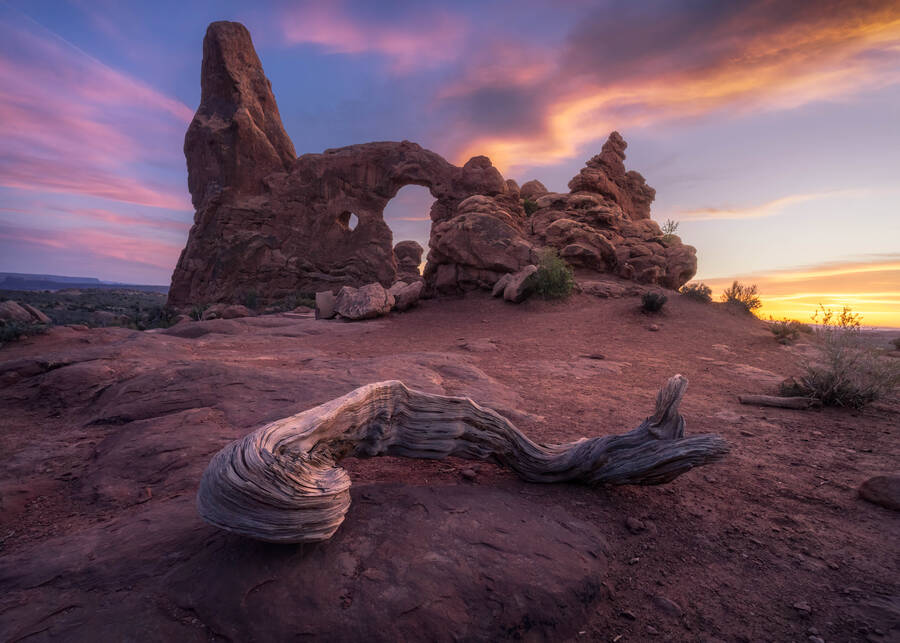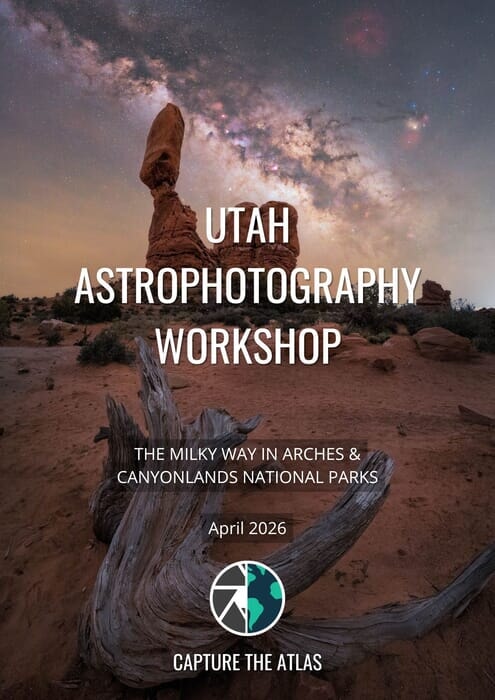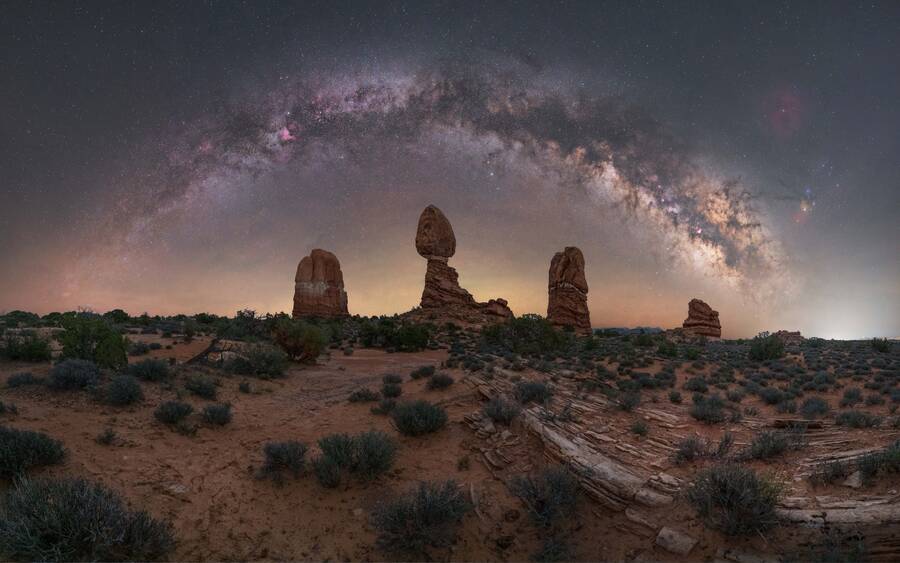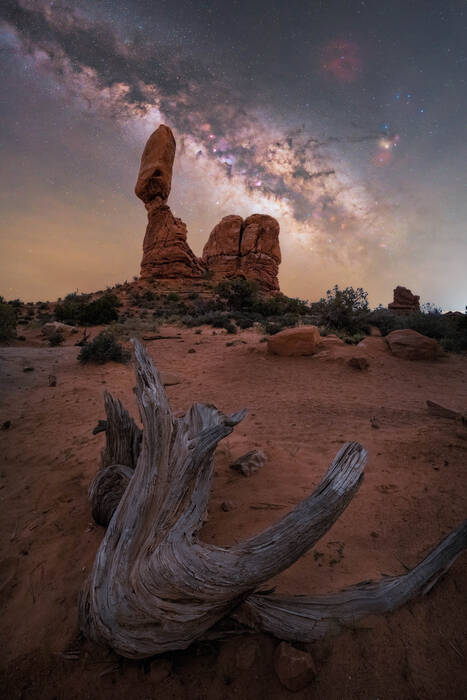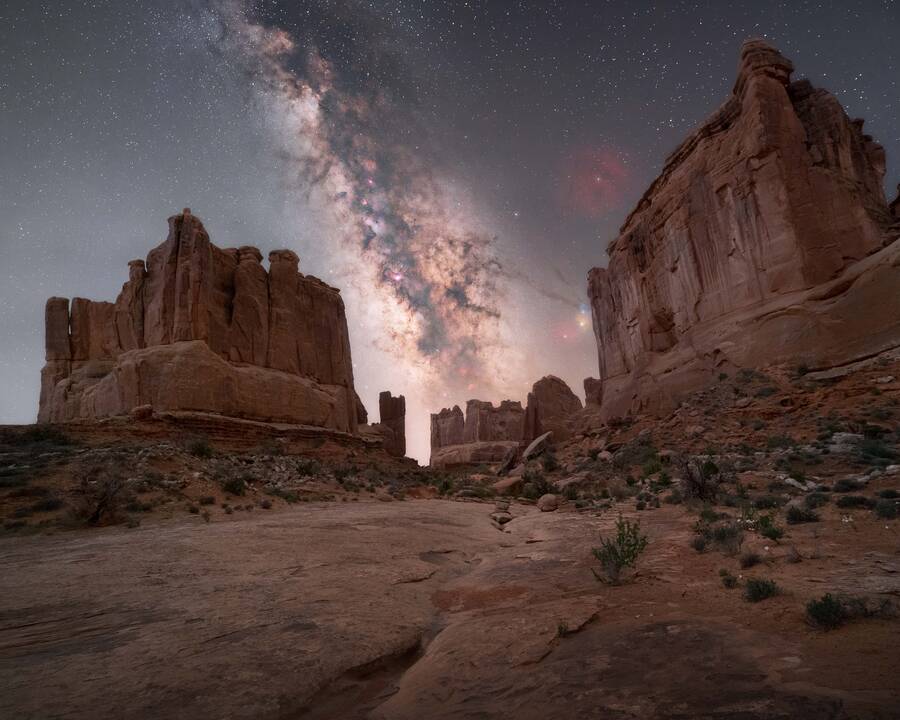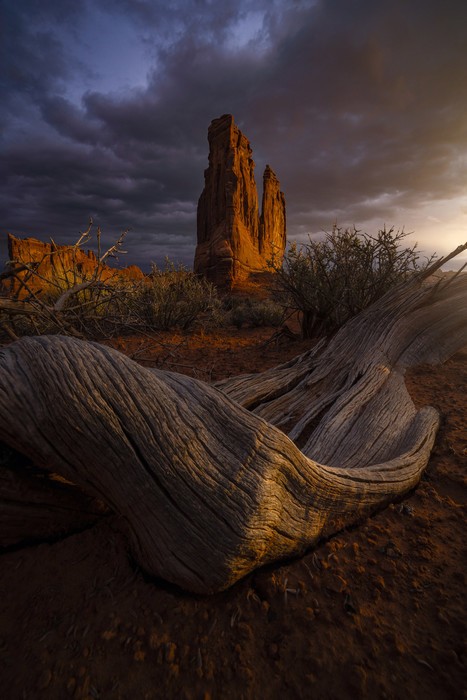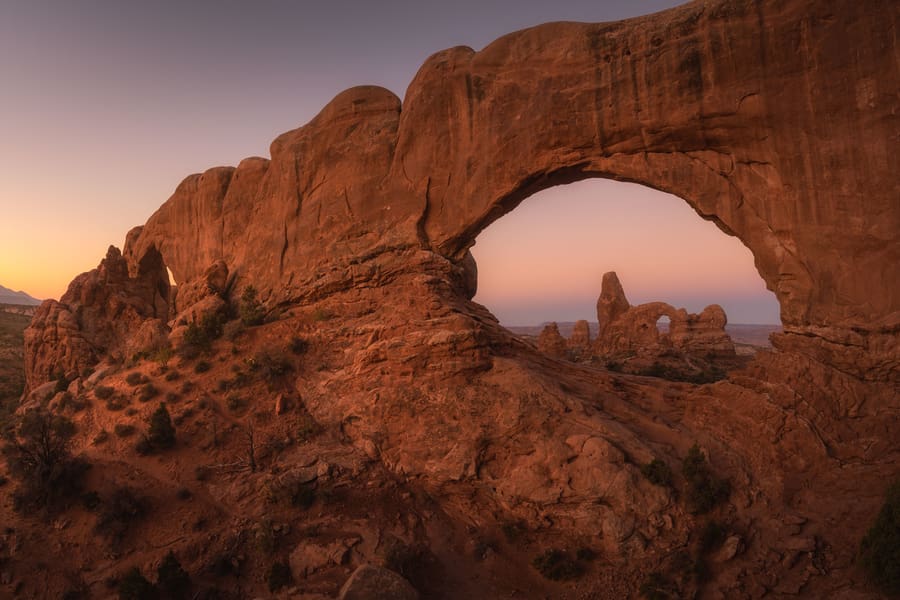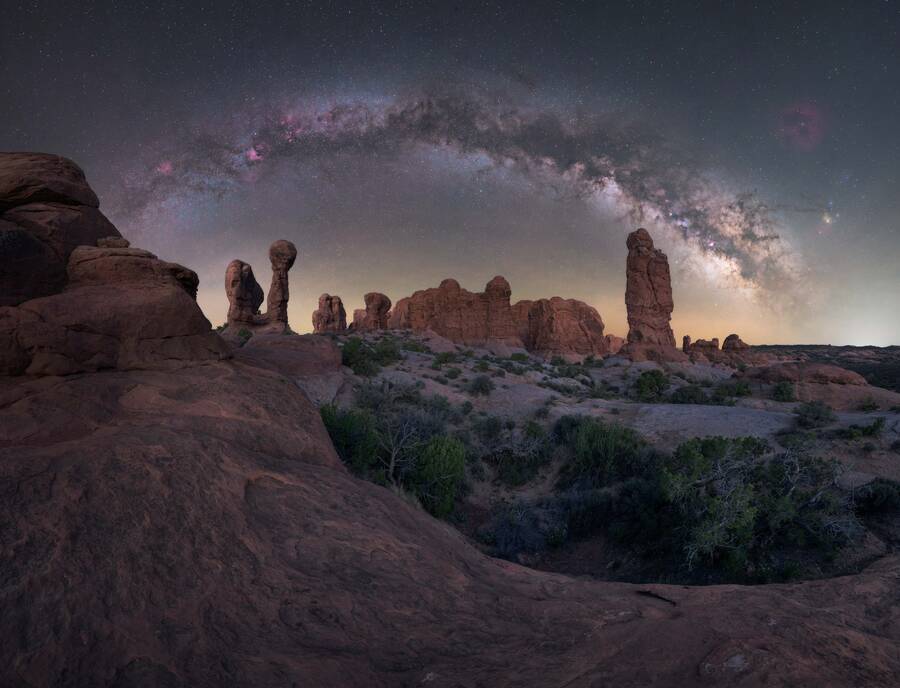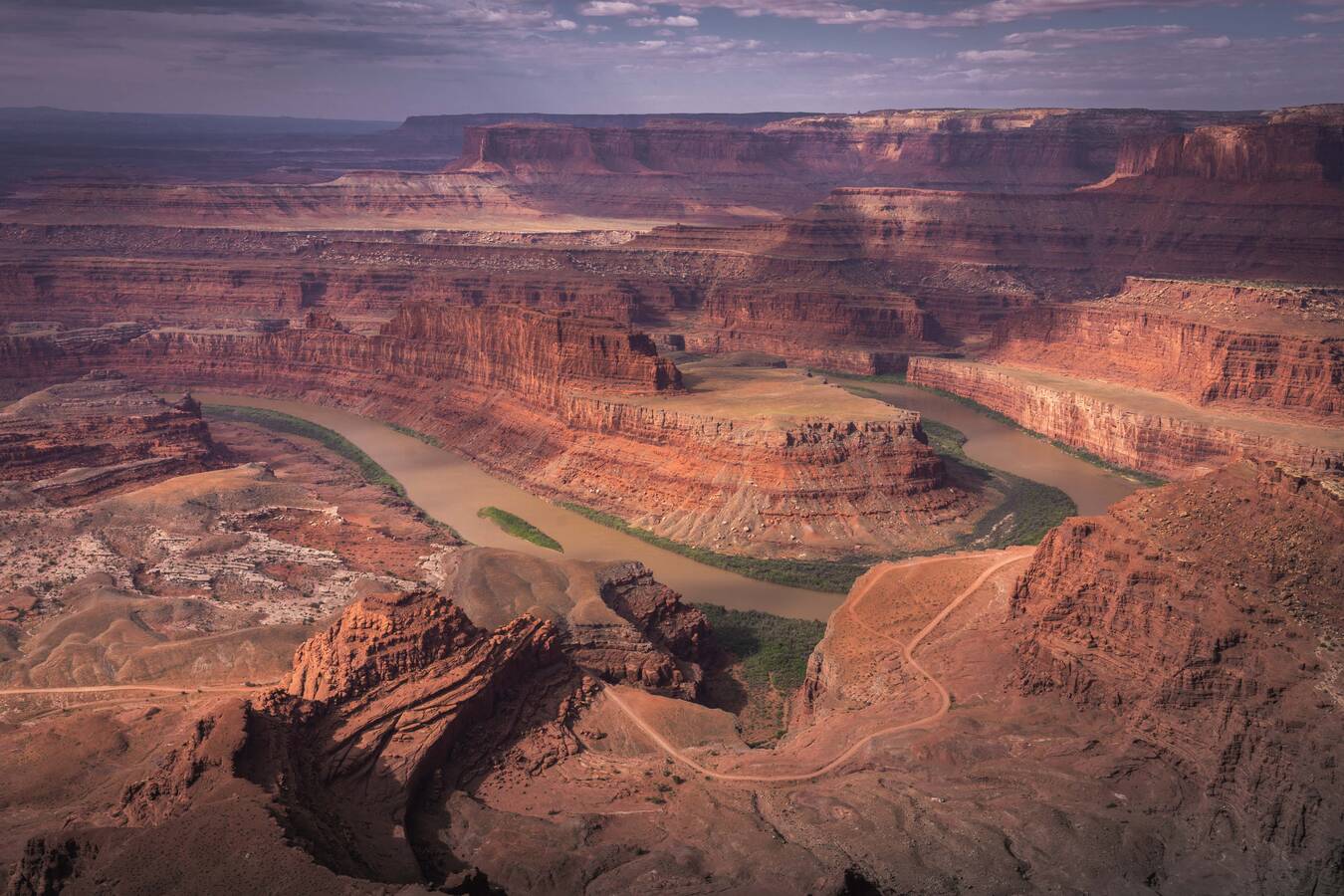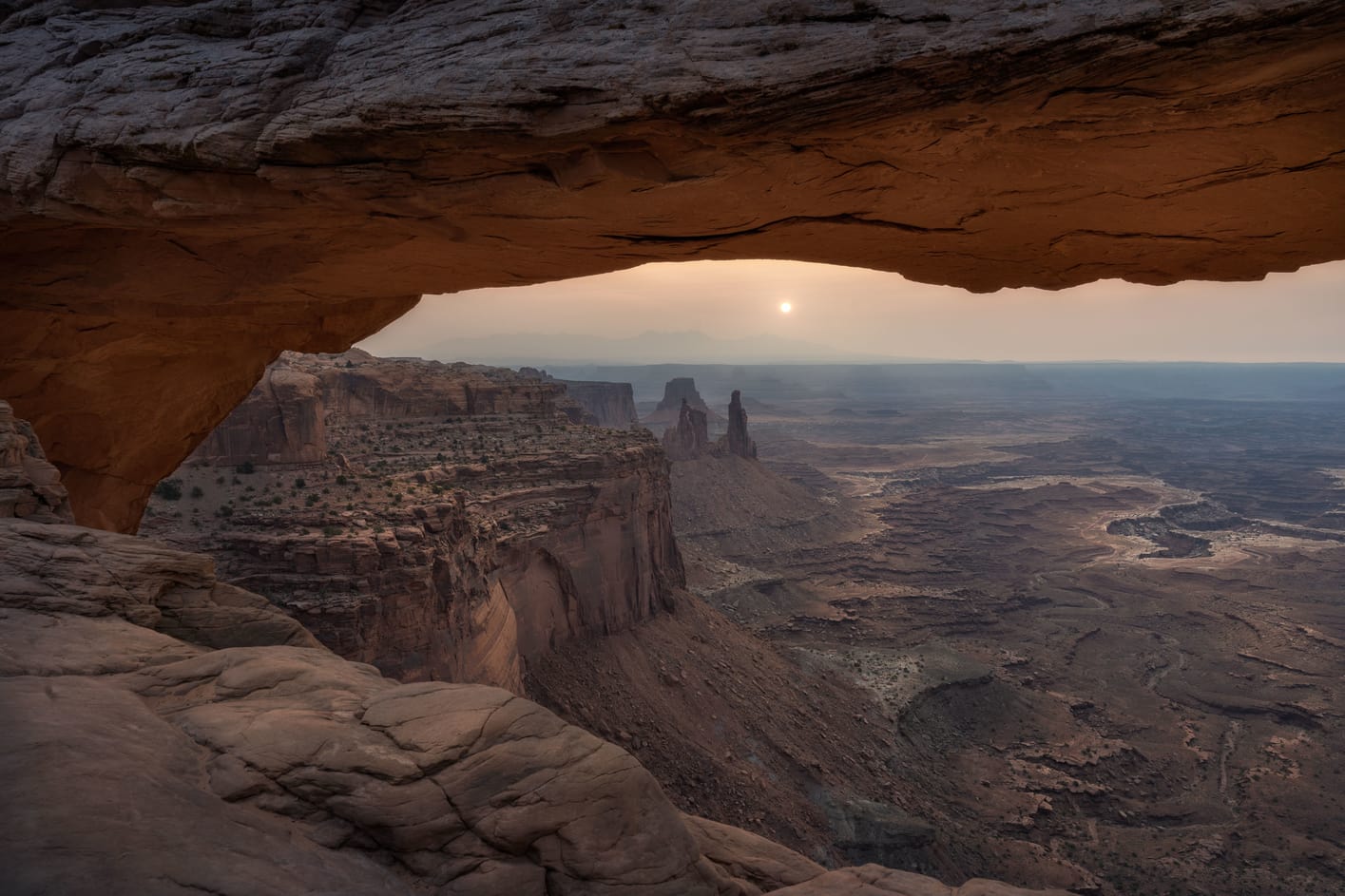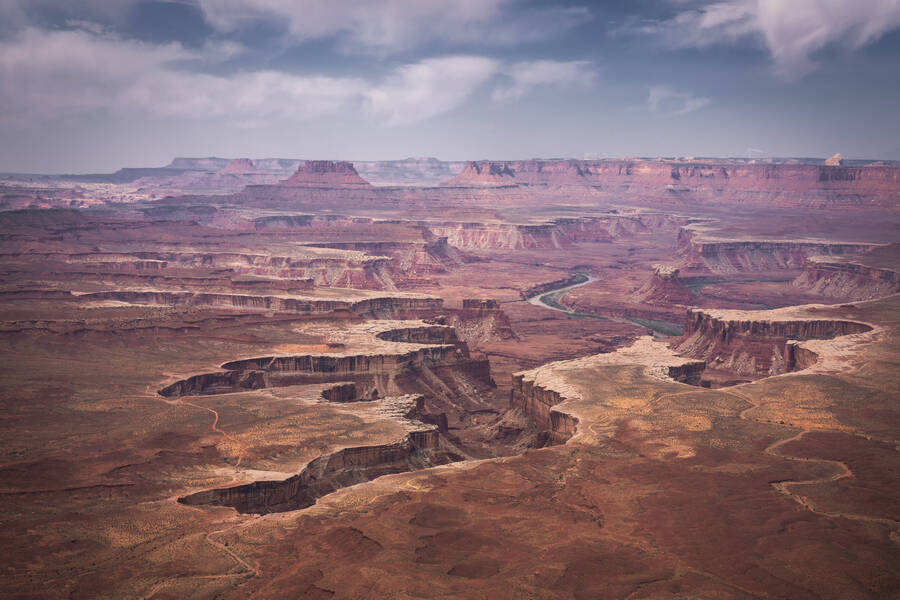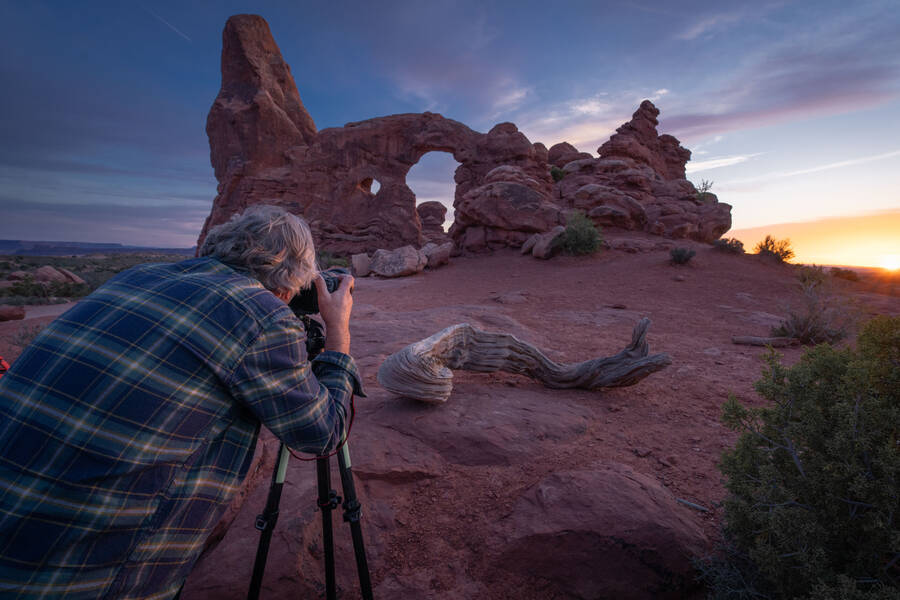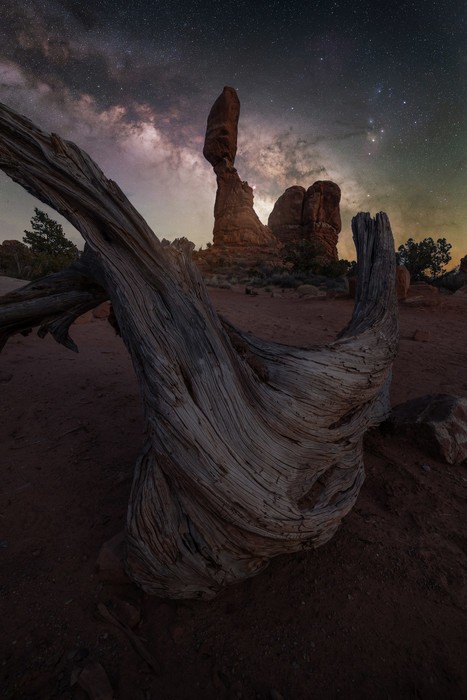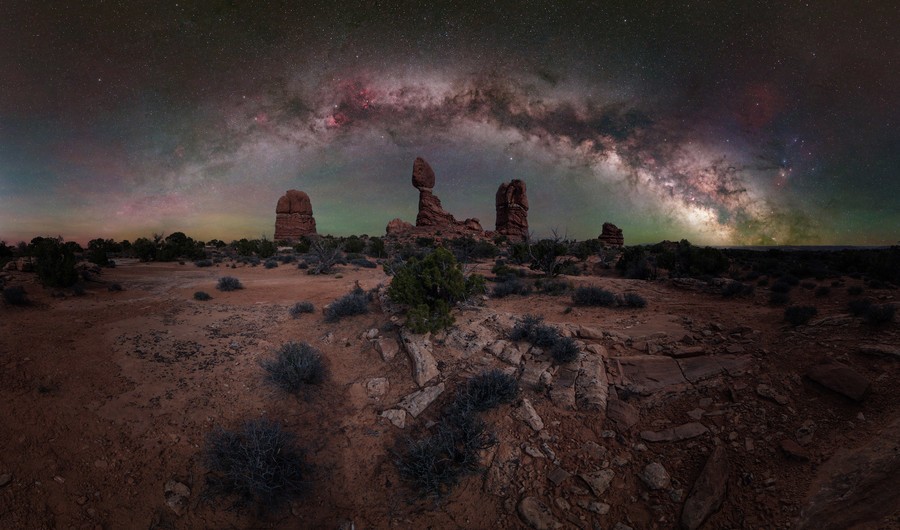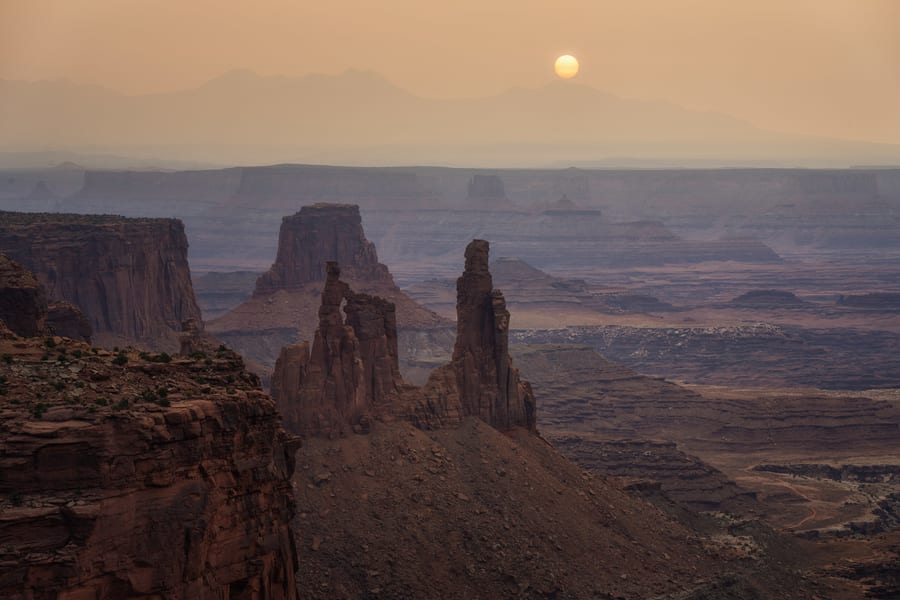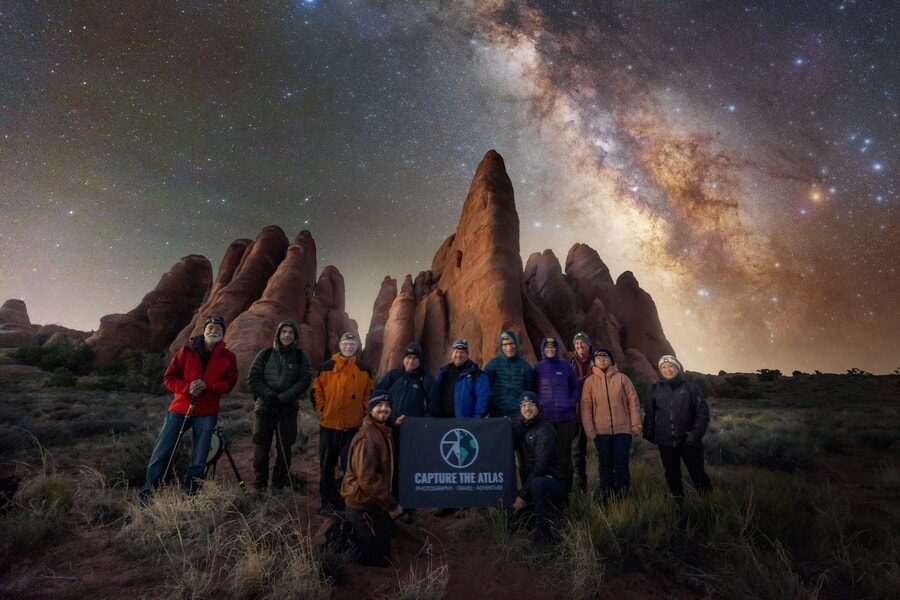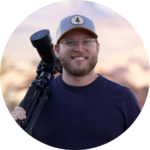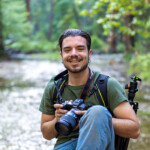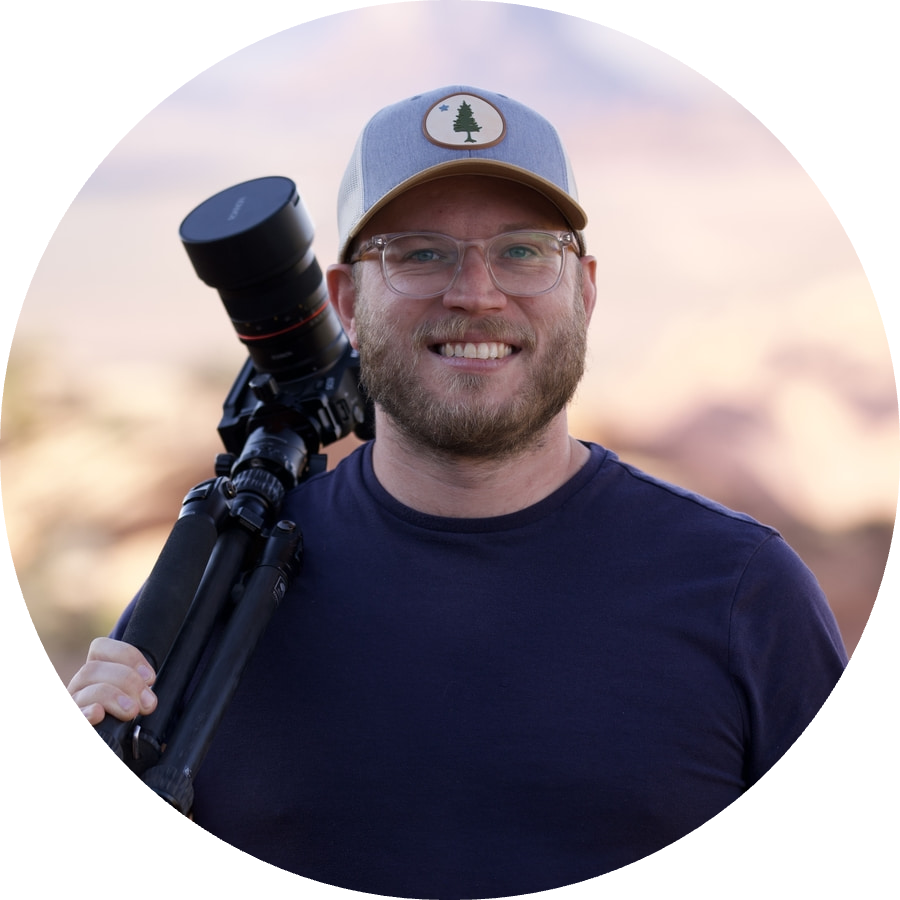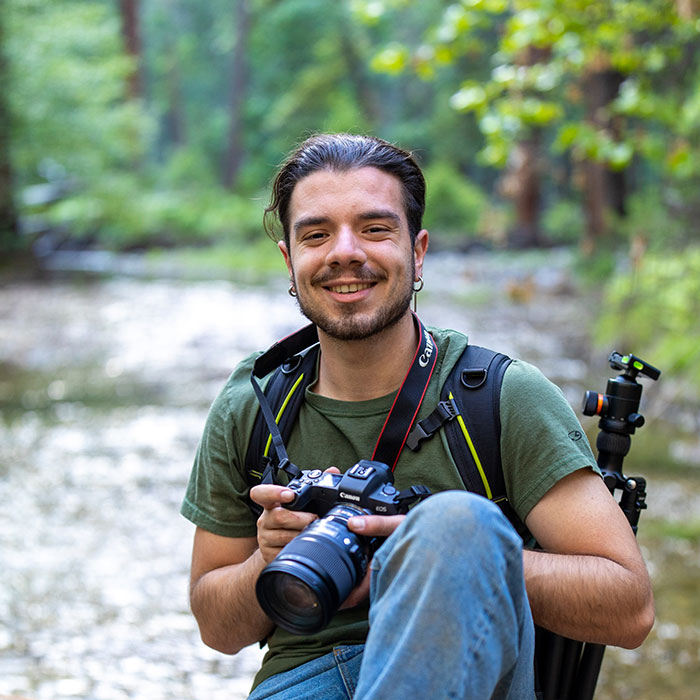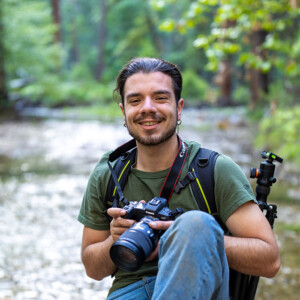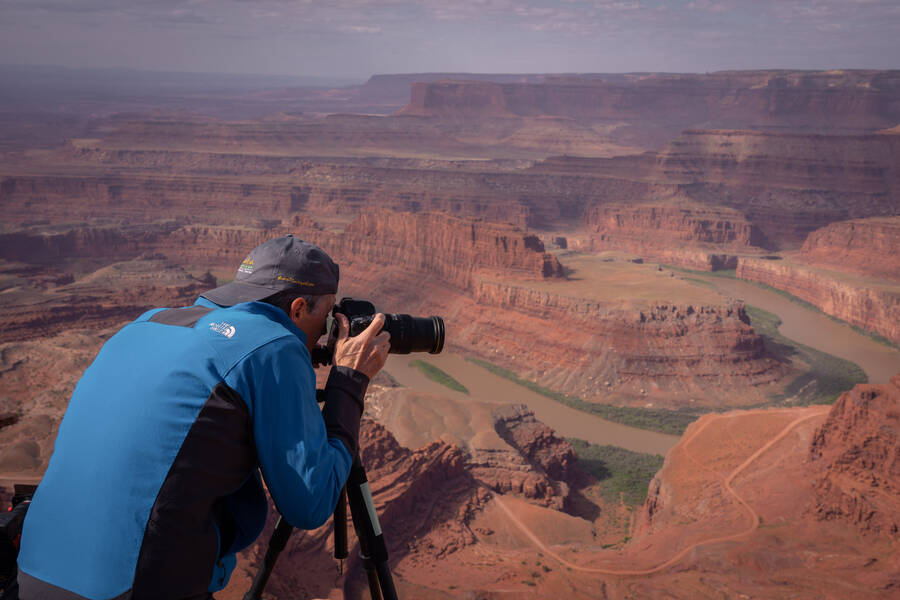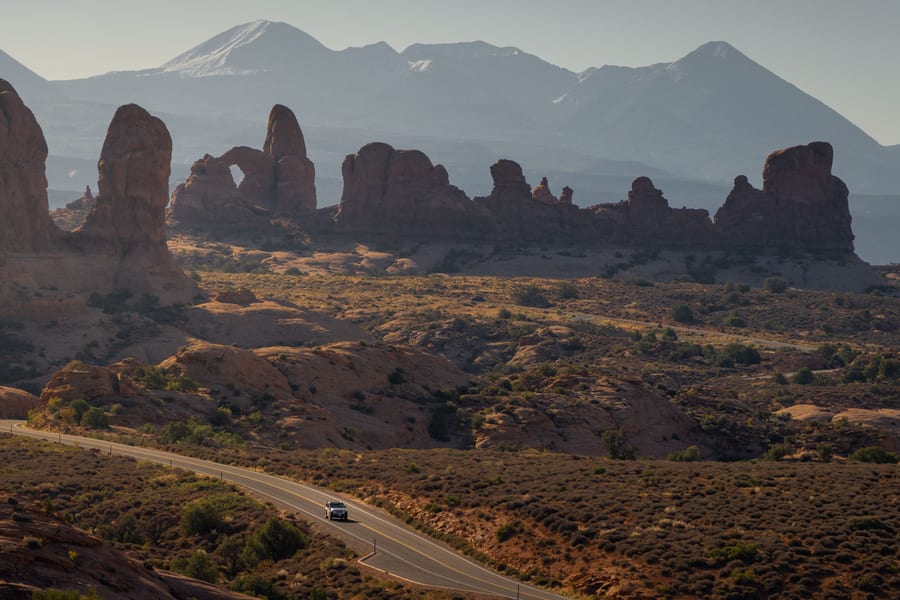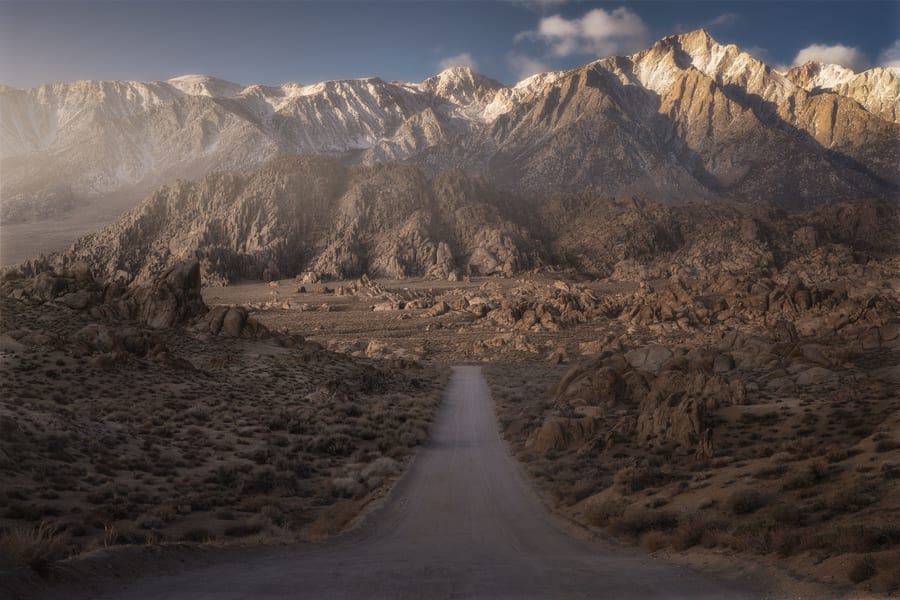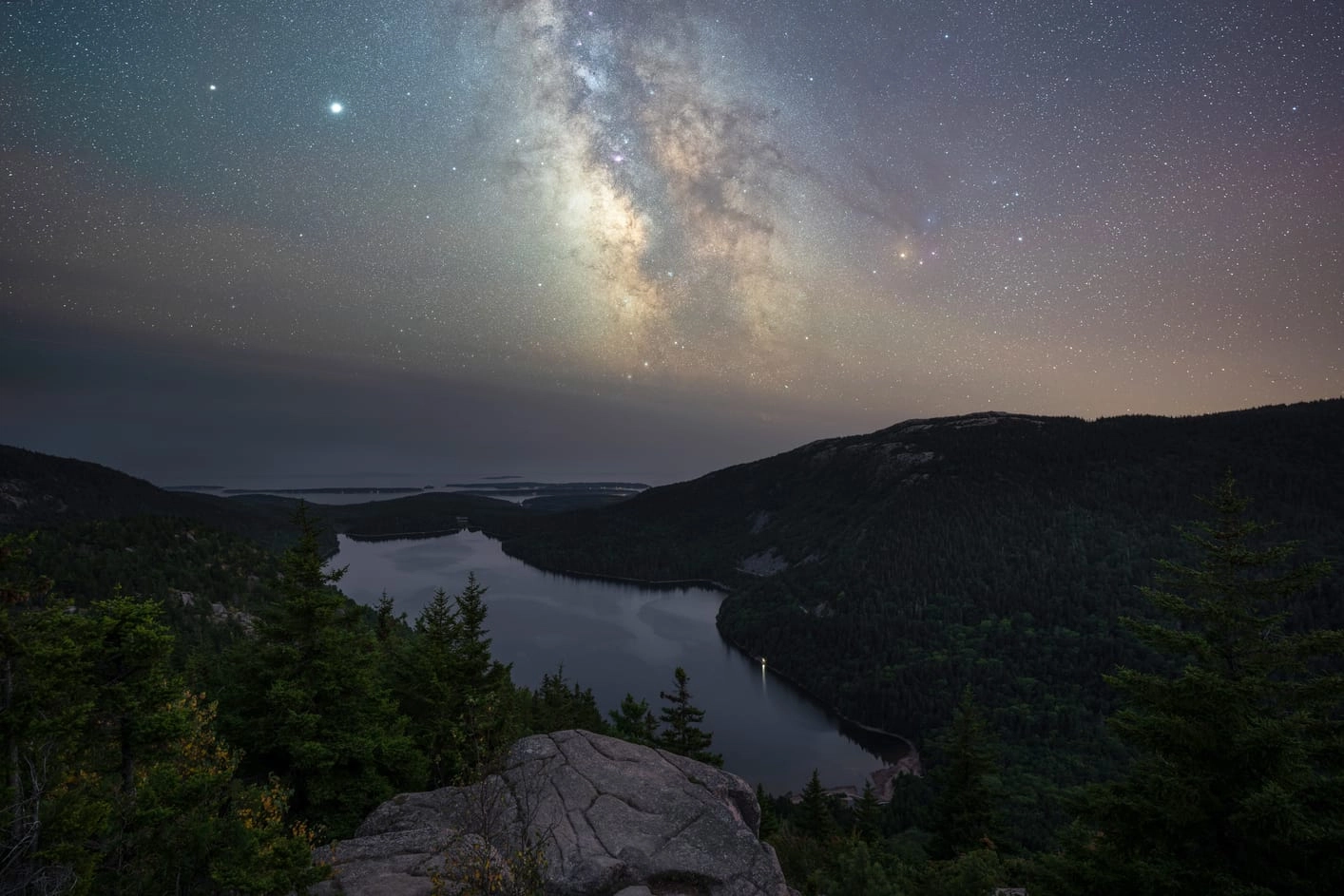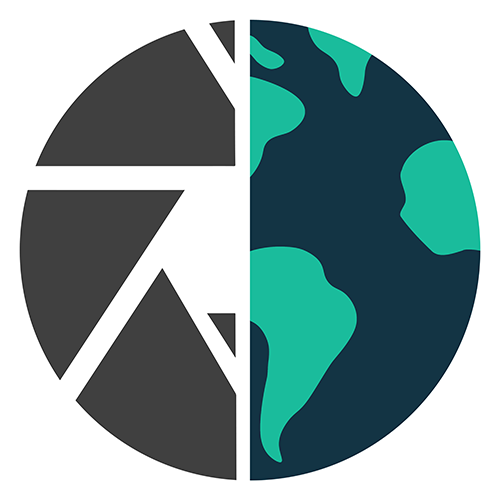Utah Astrophotography Workshops
The Milky Way in Arches & Canyonlands National Parks
Join us for a Utah astrophotography workshop in Arches & Canyonlands National Parks where we’ll capture our Milky Way over some of the most spectacular nightscapes in the Utah High Desert. We are running this tour during the best time of year to photograph the Milky Way in Arches and Canyonlands National Parks.
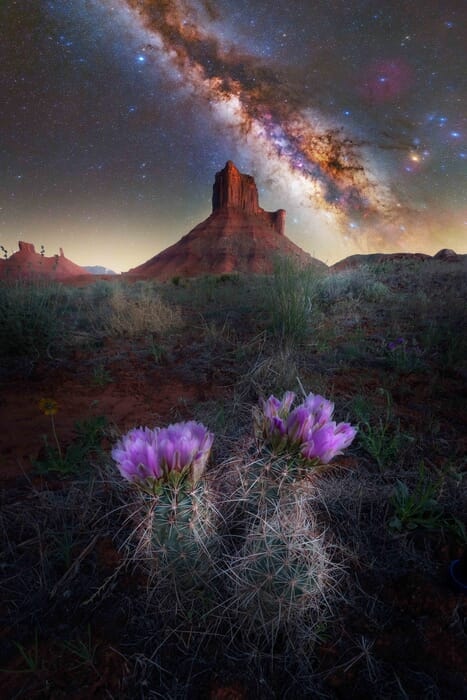
April 17th - April 23rd, 2026
7 days and 6 nights
Involves short walks and night shooting
+
2 instructors
(Private room included)
- Accommodation in private rooms at the Wingate by Wyndham in Moab
- 7 days of photo guide services by professional astrophotographers
- Instruction in a small group of 10 participants
- Pre-tour online meeting with the instructors to prepare and set goals
- Night photography sessions throughout the entire workshop, including star-tracking instruction
- Editing & post-processing sessions during the workshop
- Access to the Dan Zafra's Capture the Milky Way Course and Benro Polaris Course (valued at $349)
- Transportation (including flights) to Moab
- Transportation during the trip (we will arrange carpool)
- Arches & Canyonlands & Deadhorse Point entrance fees
- Meals, except breakfast at the hotel
- Health/travel insurance
- Telephone, personal expenses, tips, etc. Any other service not mentioned in the "INCLUDED" section

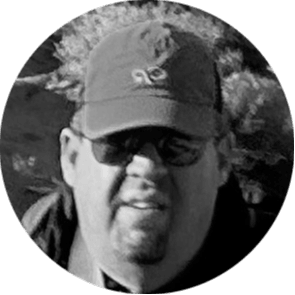
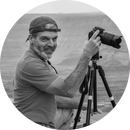
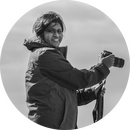
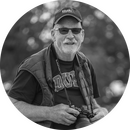
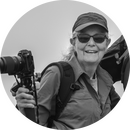
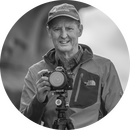

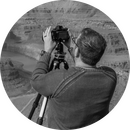
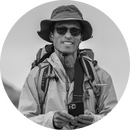
Photo Workshop Overview
During this Utah astrophotography workshop, we will focus specifically on shooting nightscapes and the Milky Way over the most photogenic formations and landscapes of Arches and Canyonlands National Parks. You’ll see everything from giant arches and Martian rock formations to enormous canyons and majestic views. This is a high-desert area, located far and above other sources of light pollution, where we’ll enjoy ideal conditions for astrophotography.
We will help you capture the best possible images during this Milky Way astrophotography tour to Arches & Canyonlands. You’ll learn the best techniques to shoot the Milky Way, from the basics to the most advanced techniques, and we will also do some post-processing sessions so you can bring your captured images to life.
While this workshop is primarily focused on astro shooting at night, we will also have time to capture the sunrise, sunsets, and daytime images when the timeframe and conditions allow.
2026 Utah Astrophotography Workshop Highlights
- Photo workshops from April 10th– 16th & April 17th– 23rd, 2026
- Group size: 10 participants + 2 instructors.
- Main topics: Landscape astrophotography.
- Main areas: Arches & Canyonlands National Parks, Deadhorse Point State Park
- Best time of year to photograph the Milky Way in Utah.
- Dedicated post-processing sessions.
- Accommodation included in private rooms in Moab, close to the best locations.
Official Utah Astrophotography workshop Brochure
2026 Utah Astrophotography Workshop Itinerary
Our Utah astrophotography workshop itinerary is flexible, and it will be adjusted according to the weather conditions so you can make the most of this trip.
Our workshop will be at the best time of year to capture the Milky Way over the High Desert landscapes of Utah. In the spring, you can photograph Milky Way panoramas at the beginning of the night, and a diagonal Milky Way at the middle and end of the night. Nights get warmer om April, and the skies are usually crisp and clear with ideal conditions for Astro.
We will also have the time to shoot daytime landscapes when the clouds roll by, show you how to scout and plan images in the field, and focus on post-processing sessions during the middle of the day when the light is harsh.
DAY 1: Arches Astrophotography Workshop
Our Utah Milky Way photo tour begins at the group hotel in Moab at 2:00 PM. This hotel is situated in an ideal spot at one of the shortest drives from the main shooting locations. It’s also very close to the best restaurants in Moab, and it will be our base camp during our stay in Utah.
After a meet and greet with the rest of the group and a welcome speech, we will do an individual gear review so we can check your equipment and make sure that everything is ready for the night outings
At night, we will do our first Milky Way photography session if confitions allow. Our first location would be at Balanced Rock; one of the most photogenic rock formations in Arches that offers an ideal framing for both Milky Way panoramas and a more diagonal Milky Way in the sky.
After this, we’ll stop on a second location in the Courthouse Towers area where we will frame the Milky Way between some of the most spectacular walls in Utah just before the blue hour starts.
(*From 2020, Arches & Canyonlands National Parks no longer allow the use of light painting or low-level-lighting for shooting at night).
DAY 2: Arches Astrophotography Workshop
On the second day of our Utah astrophotography workshop, we will photograph some of the most impressive locations in the park, focusing especially on scouting and finding the best compositions for our night shoots. Shooting locations will include some iconic landmarks like Turret Arch, The Windows, Double Arch, and Garden of Eden.
We will photograph the walls of the famous Turret and Windows arches painted in red by the setting sun, and come back at night to shoot the Milky Way over some new locations.
DAY 3: Arches Astrophotography Workshop
The third day of our Arches astrophotography workshop will take us to other impressive locations in this national park.
We will start the day by doing our first post-processing session. During the class, we’ll show you examples of how we edit our Milky Way photos captured during the previous nights, and also sit down with you to help you with your post-production as you edit your images from the trip.
For the shooting session, we’ll head out on a very special excursion outside Arches to photograph the sunset in Castle Valley, one of the most scenic and lesser-visited areas near Moab. Towering red rock formations like Castleton Tower and the Priest and Nuns stand dramatically above the valley floor, offering fantastic photographic opportunities as the evening light paints the sandstone in golden hues.
For the night session, we’ll either return to Castle Valley or head to Dead Horse Point State Park, depending on conditions. Both are remarkably dark-sky locations with striking desert landscapes, making them ideal settings for capturing the Milky Way rising above dramatic canyons, mesas, and rock spires.
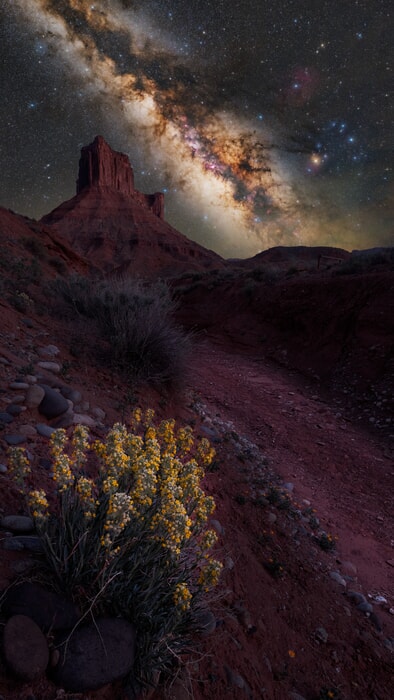
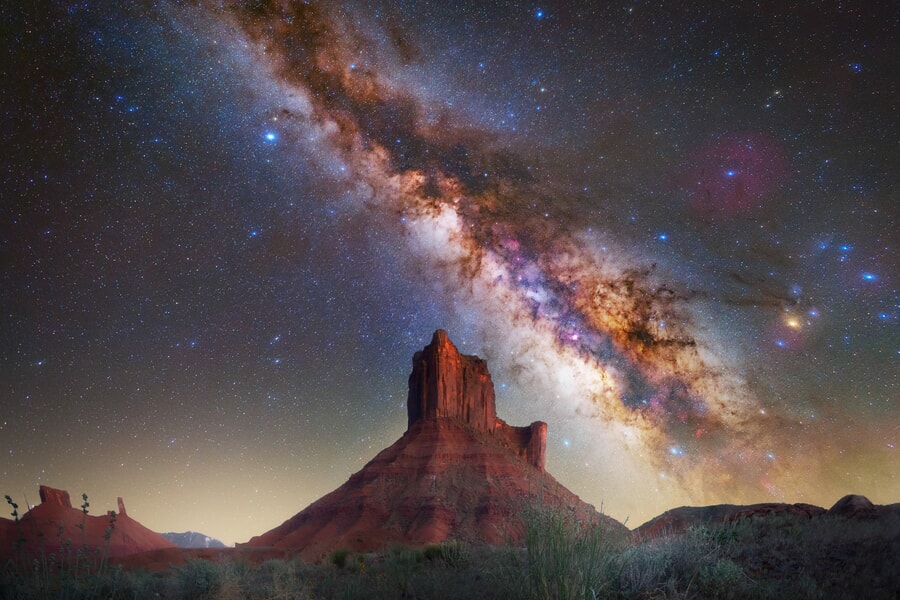
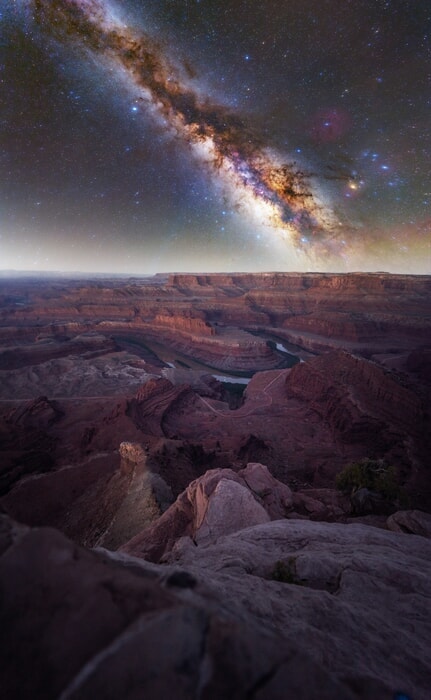
DAY 4: Utah Photography Workshop
In the next afternoon of our Utah astro photo tour, we will start the day by doing another post-processing session, where we’ll continue showing you different workflows and editing tips and tricks; and also help you bring the images that you captured to life.
In the evening, we’ll visit a new area in Arches National Park around the area known as “The Fins” and Skyline Arch. The plan will be to scout and photograph the sunset over Skyline Arch.
If conditions are good for Astro, we’ll do a session in this area of the park. Skyline arch offers a beautiful framing for a Milky Way Panorama, and that’s where we will start the first session and then move to The Fins once the Milky Way gets higher in the sky.
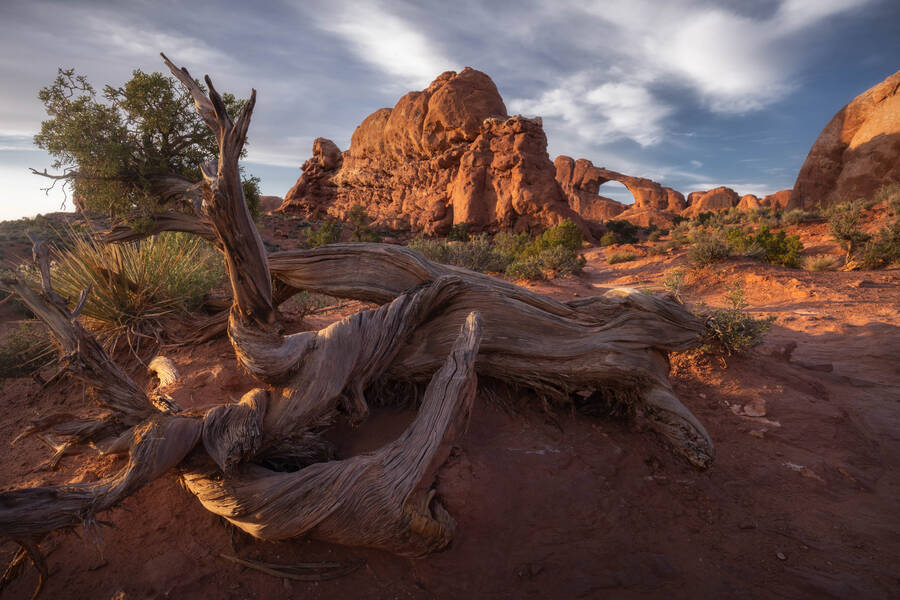
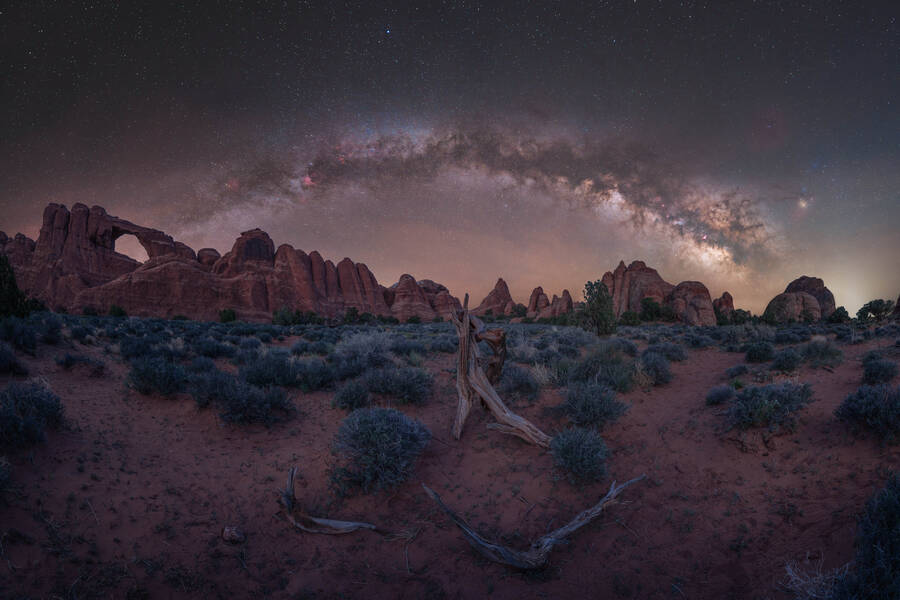
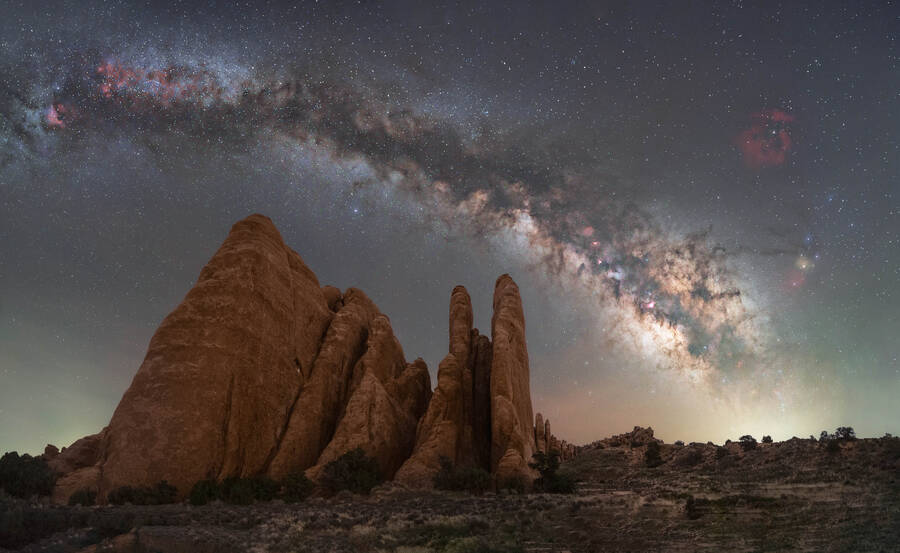
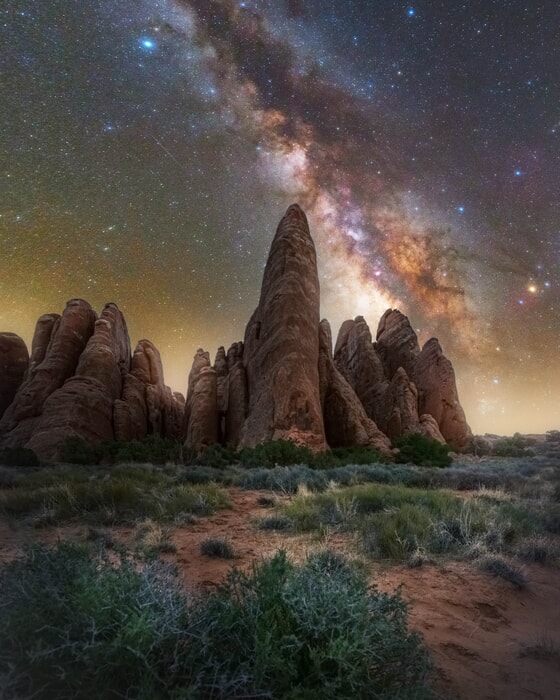
DAY 5: Canyonlands Astrophotography Workshop
On the fifth day of the tour, we will start our Canyonlands photography workshop section. This national park offers some of the best dramatic views and overlooks of the Colorado and the Green Rivers.
We will start the day photographing Dead Horse Point State Park. This park is located on the edge of a 2,000 ft mesa overlooking the Colorado river, and It offers stunning vistas and one of the most impressive grand landscapes in the entire Southwest. Depending on the previous night shooting conditions, we’ll photograph either the sunsrise when the sun paint the walls of the canyons or in the morning when the light is still not harsh.
Once in Canyonlands National Park, we’ll photograph the most popular viewpoints in the area, like the Grand View in the “Island in the Sky” area, the popular Mesa Arch, and the Green River overlook.
At night, we will return to Dead Horse Point. This is also one of the best places for astrophotography in the area, so we’ll frame the Milky Way with some photogenic trees and different subjects.
DAY 6: Canyonlands Astrophotography Workshop
On day 6, we’ll have the last post-processing session, where we’ll work with you on your best images of the trip.
We will also have a group discussion about the night images captured by the group and provide some insights so you can keep practicing and improving your editing skills.
We will photograph the sunset in one of the viewpoints of Arches National Park, and we’ll have a last group dinner in Moab.
If conditions allow, we will have a final Milky Way photography session in any of the previous locations if there were clouds that night or in a new location in Arches National Park.
DAY 7: Utah Astrophotography Workshop
On the last day of our photography workshop, we will have a final morning session where we will photograph the sun illuminating either the Colorado River or Arches National Park, depending on the previous night session.
After breakfast in our hotel, we will conclude our Arches & Canyonlands photography workshop.
Price: $4,890 USD
Deposit: USD 1,500
A $1,500 deposit is required to reserve your spot for this photo tour. You can also pay in full at any time. The remaining balance is due 120 days before the start date of the tour. If the remaining balance is not paid in full by the due date, you will lose your spot.
What does the price include?
Included
- Accommodation in private room at the Wingate by Wyndham in Moab
- 7 days of photo guide services by professional astrophotographers
- Instruction in a small group of 10 participants
- Pre-tour online meeting with the instructors to prepare and set goals
- Night photography sessions throughout the entire workshop, including star-tracking instruction
- Editing & post-processing sessions during the workshop
*Bonuses
- Access to Dan Zafra’s full Capture the Milky Way & Benro Polaris Course (valued at $349)
- Access to the recordings of the classes during the event
Not included
- Transportation (including flights) to Moab.
- Transportation during the trip (we will arrange carpool).
- Arches & Canyonlands & Deadhorse Point entrance fees
- Meals except breakfast at the hotel
- Health/travel insurance
- Telephone, personal expenses, tips, etc. Any other service not mentioned in the “INCLUDED” section
*Capture the Atlas operates under a CUA (Commercial Use Authorization) with the National Park Service to run photography workshops on the park premises. Under this permit, all instructors and participants don’t require any of the timed entry tickets that are mandatory to access the park since 2022.
Upcoming Utah Astrophotography workshop dates










What will I learn during this Utah Photo Workshop?
This workshop is mainly focused on night and Milky Way photography. However, we will also photograph landscapes during the blue and golden hours, so you’ll have plenty of opportunities to learn about landscape astrophotography.
What you learn during the workshop will vary according to your goals and skills. Your instructor is a professional photographer with extensive experience who will help you take your photography to the next level.
Photography basics
Some of the photography basics you can learn during the workshop are:
- Getting comfortable shooting different types of landscapes and photos in manual mode
- Adjusting the best camera settings in each situation
- Familiarizing yourself with the basics of night and Milky Way photography
- Enhancing your compositions with the best techniques
- Designing your own shooting workflow to be more effective in the field
- Photographing daytime and night panoramas
Advanced photography techniques
Some of the advanced photography techniques you can learn during the workshop are:
- Creating powerful compositions that tell a story and engage the viewer.
- Building a connection between your photography and your vision.
- Becoming a master of light: learn how to enhance it and keep it under control.
- Advanced night & Milky Way photography techniques like stacking and panoramas.
- Advanced bracketing and exposure blending to capture the best dynamic range.
- Using wide-angle distortion and focal length blending to create powerful images.
- Focus stacking to capture tack-sharp images with interesting foregrounds.
- Advanced Milky Way shooting using a star-tracker
Post-processing techniques
Some of the post-processing techniques that you can learn with are:
- How to start using Lightroom and Photoshop (all the basics).
- Preparing your images in Lightroom/Adobe Camera Raw to start on the right foot.
- Stitching panoramas using different software like Lightroom, Photoshop, or PTGui Pro.
- Stacking night images using Starry Landscape Stacker or Sequator.
- Reducing the noise in your night images using Denoise AI software.
- All types of Blendings (exposure, focal length, focus, etc.).
- Light shaping and Dodge & Burn in your landscape images.
- Advanced Milky Way techniques like star reduction, structure, natural colors, etc.
Your TOUR LEADERs on this Utah astrophoto tour
Dorian Sanders is one of the tour leaders of this workshop and will help you capture the night images that you’re envisioning.
He is a skilled astrophotographer who also has extensive experience, having led workshops focusing on how to use star trackers, how to compose scenes for the most dramatic images, and how to process using a plethora of digital platforms. He is also experienced in leading Capture the Atlas tours in Utah which makes him the perfect guide to lead this tour.
Dorian is based in Vermont and has been taking photos for the past decade. He’s an expert in the main subjects that you’ll be photographing on this trip, and he can also help you with other topics like landscape photography. He will show you how to find great compositions and help you with your night photography, from the basics to advanced techniques like star-tracking.
James McGivern is one of the tour leaders of this workshop. He is a proficient astrophotographer and an expert in capturing all types of images, from wide-field nightscapes to deep-sky imaging.
James is based in Southern California and has explored and photographed some of the best places for Astro in the US such as Death Valley, Joshua Tree, Arches & Canyonlands, etc.
He has also taught night photography workshops at Sky’s the Limit Observatory and has volunteered for several outreach programs at the observatory.
James is an experienced photography guide, having led astro workshops in Utah in the past, and will be able to help you with your night photography from the basics to advanced techniques like star-tracking.
What to bring on this Utah Astro Photo Tour
A complete list of everything that we recommend for this tour is sent to all participants upon sign-up. Below, you can find a summary of things you might need:
Photography gear
- A mirrorless or DSLR camera.
- A sturdy tripod and a remote shutter.
- A wide-angle lens, such as 14-24 mm.
- A medium zoom lens, such as 24-70 mm.
- A telephoto lens, like a 70-200 mm lens.
- A camera bag to transport all your equipment.
- A headlamp for the night shoots.
- Glow-in-the-dark tape for your tripod.
- A laptop for the post-processing sessions
Some optional items if you are focused on advanced MW photography are:
- A star-tracker.
- A laser for doing the polar alignment.
*While zoom lenses are acceptable for this workshop, prime lenses are recommended for Milky Way photography. Some of the best lenses in this range are:
-20 mm f/1.8, 24 mm f/1.4, 28 mm f/1.4, 35 mm f/1.8, 40 mm f/1.4, 50 mm f/1.8
You can get them either from your camera brand or from third-party manufacturers like Rokinon or Sigma.
*This Utah astrophotography workshop focuses on Milky Way nightscapes and not on deep-sky imaging. However, you can bring a telephoto/telescope and take your own deep-sky photos if you like. Our instructor James is also a seasoned deep-sky astrophotographer and can help with this type of imaging.
You may be interested in this guide, where you can dive deeper into photography equipment for traveling.
Clothing
Even though the sun makes temperatures very warm during the day, nights can be chilly on the Utah High Desert plateau, especially if there is wind.
For this reason, we recommend bringing the following clothing:
- A system of layers to wear at night (base layer, windproof layer).
- A good pair of breathable boots (to protect your feet and ankles while hiking over rocks and uneven terrain).
- A light hat and gloves for the night photography sessions in case it gets cold.
Documentation
If you are traveling from outside the US, you may need a specific travel visa or an electronic travel authorization (“ESTA”) depending on your country of origin. We can help you with this process.
Other important information
Accommodation
During this Utah astrophotography workshop, we’ll be staying at the Windgate by Wyndham. This is one of the best hotels in Moab and it’s close to the main photography locations. Accommodation is included during the workshop in private rooms.
If you plan to share a room with a partner or friend, we’ll offer a discount of $550 per person off the general price of the workshop.
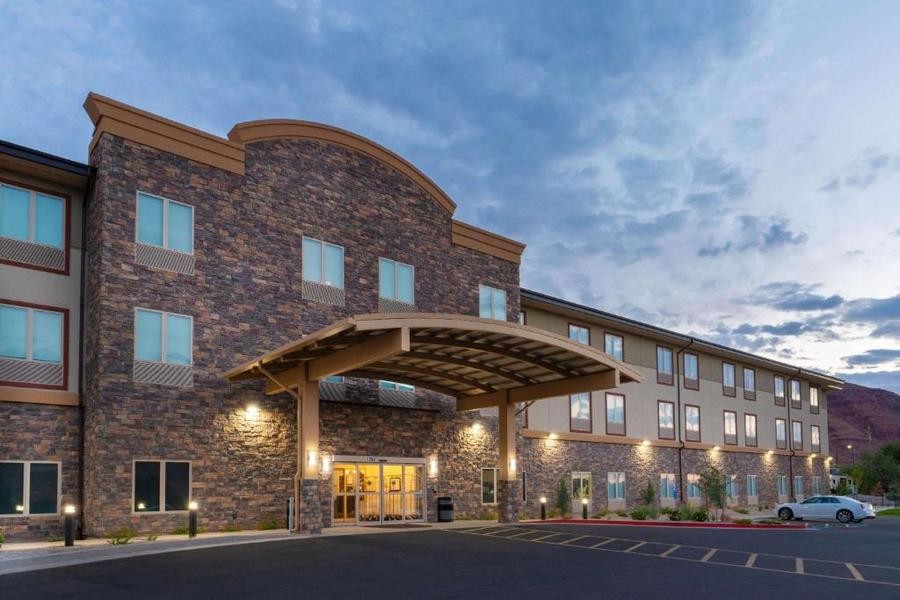

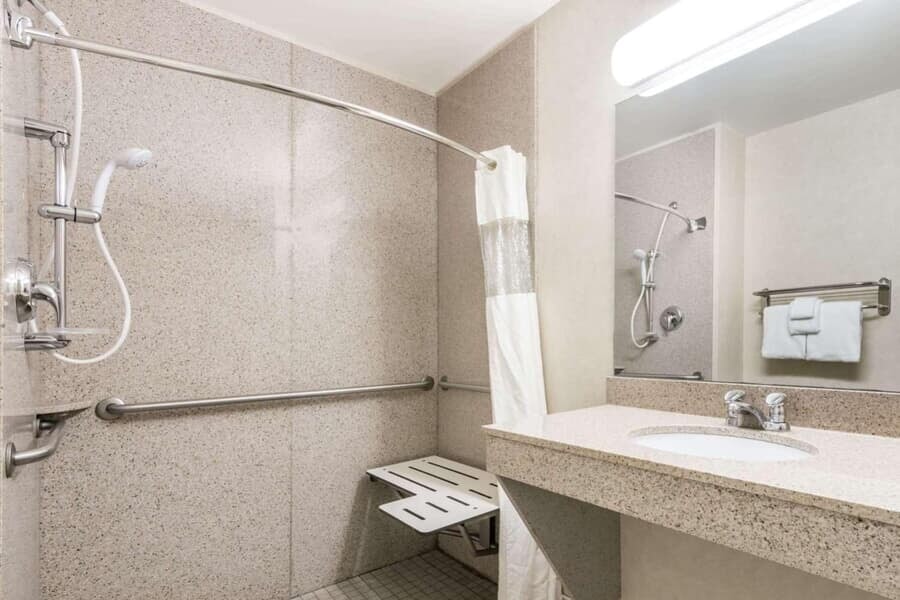
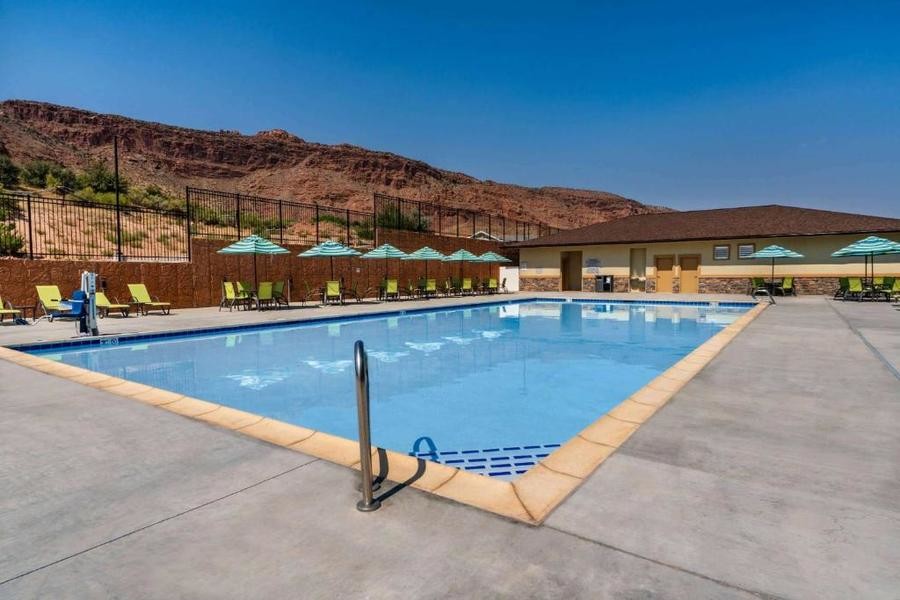
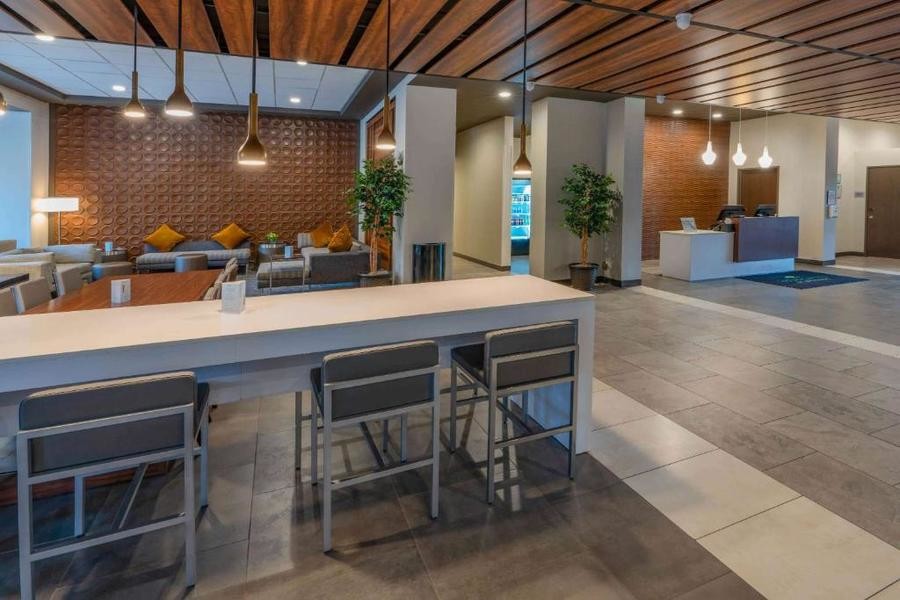
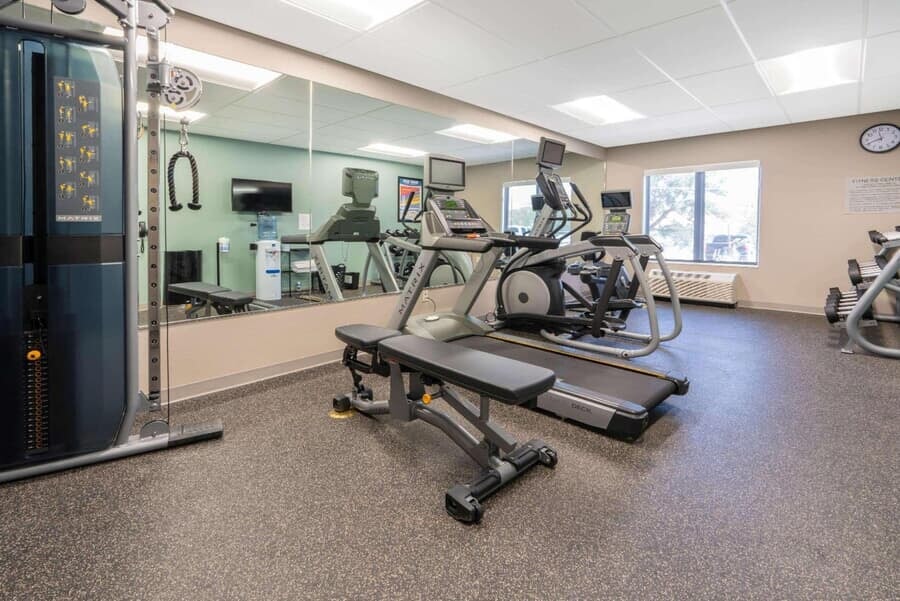
Fitness Level
This tour doesn’t involve any long or strenuous hikes, as most shooting locations are just a short walk from the parking areas.
Keep in mind that around 90% of our photography sessions will take place at sunrise or after sunset. This means we’ll be following a mostly nocturnal schedule throughout the workshop, and on some days, we may have to sacrifice a bit of sleep. For this reason, we recommend being in good physical shape and maintaining high energy levels to make the most of the experience.
What expenses should you consider for this Utah photo tour?
Flights
There are different airports within a relatively short drive from Moab. The closest airport is the Canyonlands Regional Airport, which is a 20-minute drive from Moab.
However, there aren’t many flights or rental car options there compared to other major airports, so the main options are Grand Junction Regional airport (1:40 min aprox. from Moab), Salt Lake City International Airport (3:30 approx. from Moab), Denver Int. Airport (5:30 approx. From Moab), and Las Vegas International Airport (6:45 approx. from Moab).
Airline ticket prices will depend on the airport you are flying from. We recommend reading this article if you want to find the best flights from your current location.
Transportation
Transportation will not be included, and all the driving will be on paved, easy roads, so any type of vehicle is fine for this Utah workshop.
When traveling to different locations on the tour, we will try to carpool as often as possible. Some parking areas are small, and we would like to minimize our impact on the land.
Meals
Meals are not included, except for breakfast in our hotel.
Moab has grocery stores where you can buy food, drinks, and snacks. We recommend buying some groceries and snacks before the start of the tour since our schedule will completely depend on the shooting conditions.
We will try to go every day to a local restaurant either for lunch or dinner.
Entrance fee
The Southeast Utah park pass to Arches and Canyonlands National Parks costs $55 and is valid for a week. You can get your pass in person at the kiosk before entering the park.
Since 2022, there is a timed entry reservation system to access Arches National Park from 6 AM to 5 PM daily. This doesn’t apply to us since we have a commercial authorization permit for the workshop, but bear this in mind if you want to visit the park before or after the trip. You can see more information here.
Additionally, we will visit Dead Horse Point State Park during the workshop. Please note that this park requires a separate entrance fee of $20 per vehicle, which is not included in the national park passes. You can pay for your ticket at the entrance, as it is not included in the workshop.
If you plan to visit more national parks within the following year after the workshop, we recommend getting the “America the Beautiful” annual pass, which gives you unlimited access to all national parks and some state parks in the country for only $80. You can get it online here.
What makes this Utah AstroPhoto Tour unique?
Our astrophotography workshops are completely centered on photography: finding the best moments to shoot, running dedicated post-processing sessions, and creating an intensive experience that is conducive to learning and taking the best Milky Way images.
Our workshops are limited to small groups with a ratio of no more than five students per instructor. This is also an important factor for providing the attentive instruction you need during the tour.
You’ll learn how to make the most of your camera gear to capture Milky Way images as well as the most effective post-processing techniques to bring your images to life. The instruction and the setting in an exclusive group of astrophotographers make this workshop unique and distinct from standard night photography tours.
We will discuss your goals before the tour so we can create a dedicated instruction plan for you. It doesn’t matter your age or skills; we will design your plan and provide you with materials before, during, and after the workshop so the learning process is not limited to just the tour.
We have spent years designing national and international photo tours with successful results, helping photographers with their Milky Way & Northern Lights photography. Dan’s online courses have also helped more than 400 photographers over the last few years.
Beyond the photography, our photography workshops help build strong bonds that last forever. After our trip, you’ll feel like you have been with a group of friends rather than on a standard tour. We are thankful to have plenty of repeat clients who keep traveling and learning with us.
Frequent asked questions about our Astro Workshops
What level should I be to attend this photo tour to Arches & Canyonlands?
Whether you are experienced or just starting out in Milky Way photography, you are welcome, and I am convinced that you will progress quickly. Together, we will send you home with a thorough knowledge of many photography areas, from the basics to multiple advanced techniques.
Once you sign up for the workshop, we will discuss your skills and goals for this tour, and I’ll organize a teaching plan so you can make the most of this experience.
What physical shape do I need to be in?
This tour doesn’t involve any long or strenuous hikes, as most shooting locations are just a short walk from the parking areas.
Keep in mind that around 90% of our photography sessions will take place at sunrise or after sunset. This means we’ll be following a mostly nocturnal schedule throughout the workshop, and on some days, we may have to sacrifice a bit of sleep. For this reason, we recommend being in good physical shape and maintaining high energy levels to make the most of the experience.
Am I too young/old for this Utah photo tour?
There is no age limit. This trip is perfect for anyone over 18 years old who wants to photograph Utah with us.
Can my non-photographer companion join us on the tour?
Non-photographer companions are welcome to join the tour, and they need to book a spot under the same price and conditions as any other participant. (We don’t allow non-participant companions tagging along with the group). We have had plenty of non-photographer companions over the years and all of them enjoyed an amazing experience. As long as they enjoy nature, beautiful landscapes, and are a bit patient with the schedules of a photo tour, joining the trip can be a great experience regardless of the shooting.
Do I need a star-tracker?
You don’t need a star-tracker, but you can bring one to the workshop if you have a good foundation in Milky Way photography and you’d like to focus on some advanced shooting.
Do I need a day entry permit for Arches National Park?
Since 2022, Arches National Park requires a timed entry ticket with a specific time slot in advance to access the park.
However, as holders of a commercial use authorization permit, you don’t need any timed ticket to access the park during the workshop. The only requirement will be having your National Park pass described above.
Our Happy Students!
We have had the opportunity to work with and help countless photographers in Utah over the last few years. Sharing and teaching photography is our passion, and we love doing this both online and in the field.

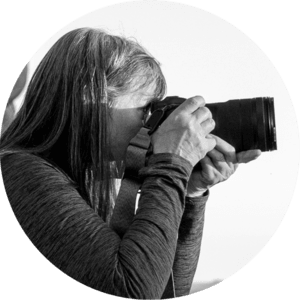








The Utah High Desert is one of the most special places where I have photographed the Milky Way. There is something magical about being in a desert plateau away from light pollution and surrounded by a dark, starry sky with only the sound of coyotes howling in the distance.
In this vast area, you will find not only Martian landscapes and otherworldly arches, canyons, and rock formations, but also memories that will last a lifetime.
Let’s capture the Milky Way!
You’ve probably seen Capture the Atlas in…






Similar Photo Tours you might be Interested in
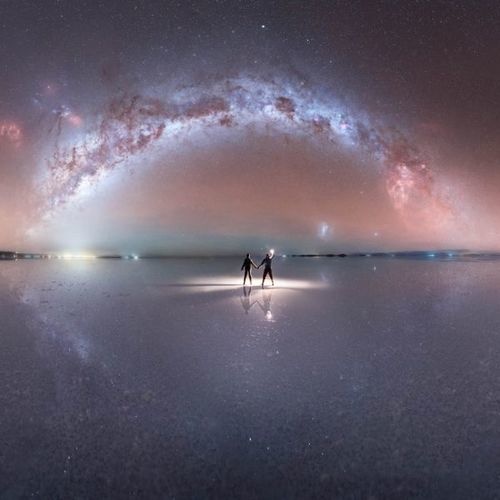
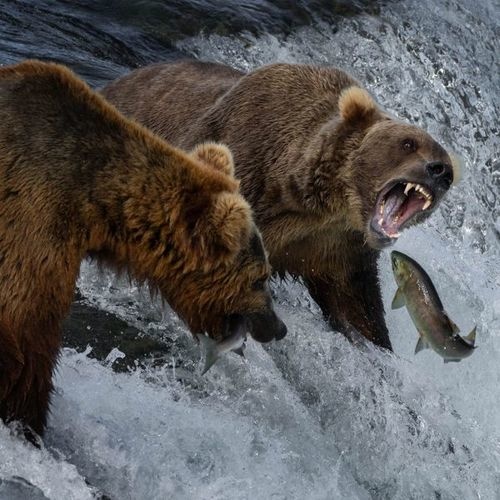
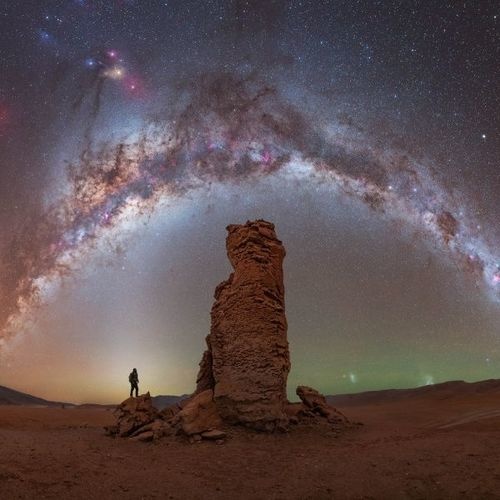
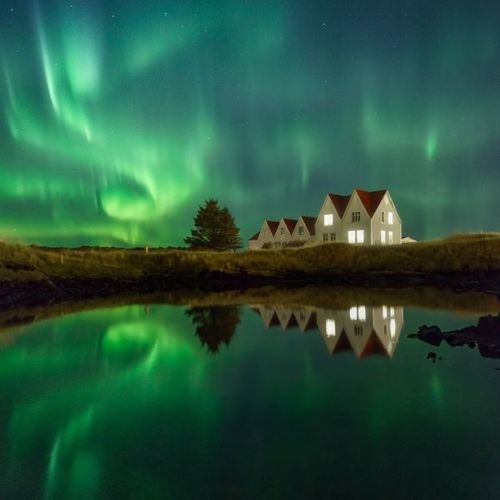
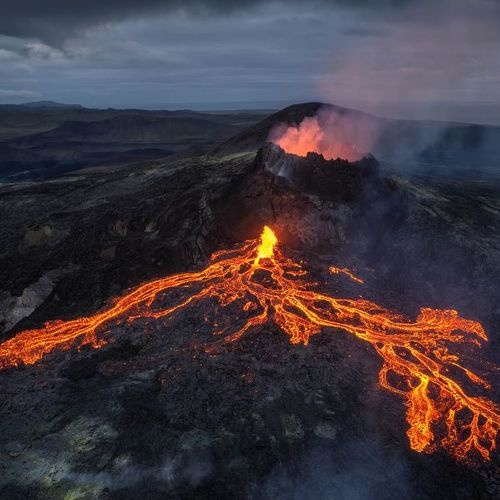
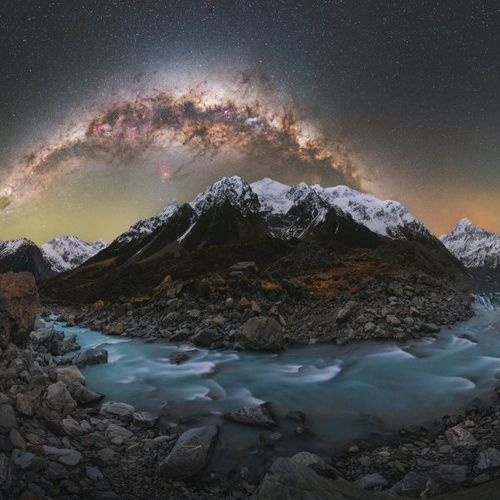
Follow our adventures and trips on instagram
© 2025 CAPTURE THE ATLAS | Photography · Travel · Adventure | ALL RIGHTS RESERVED
